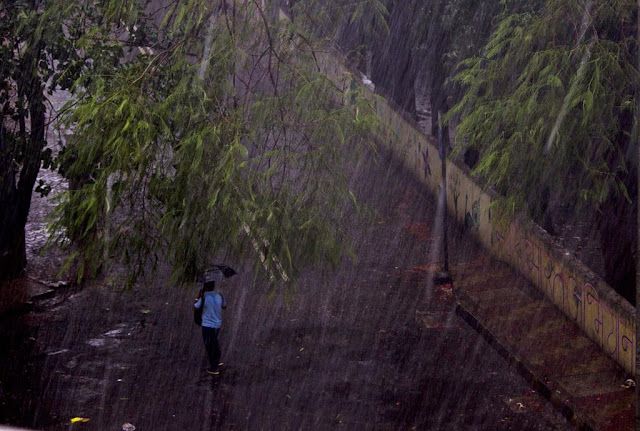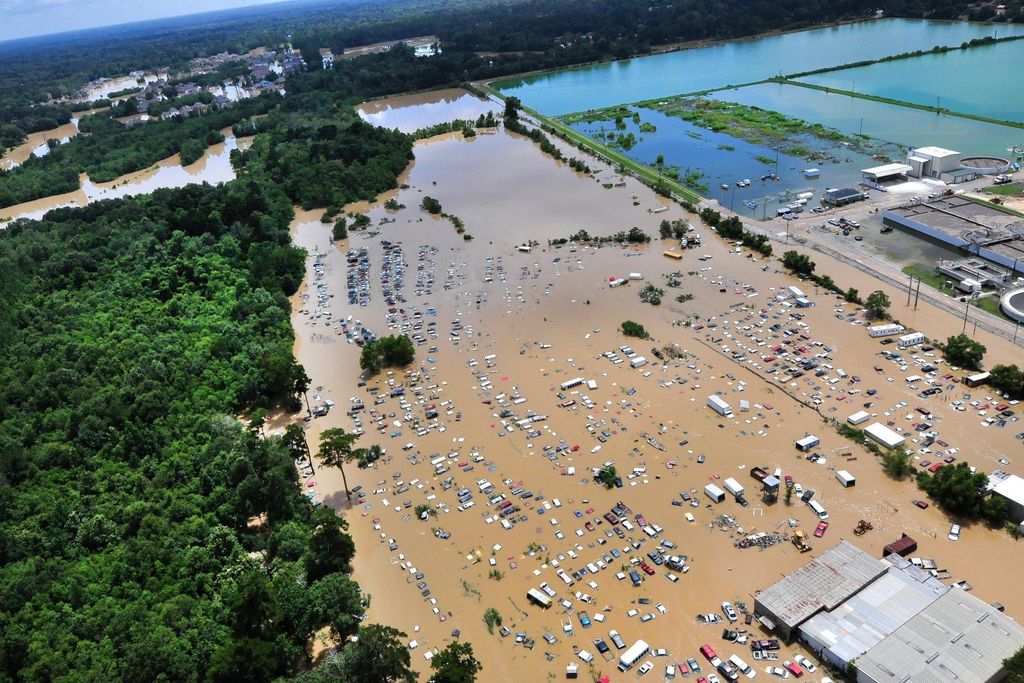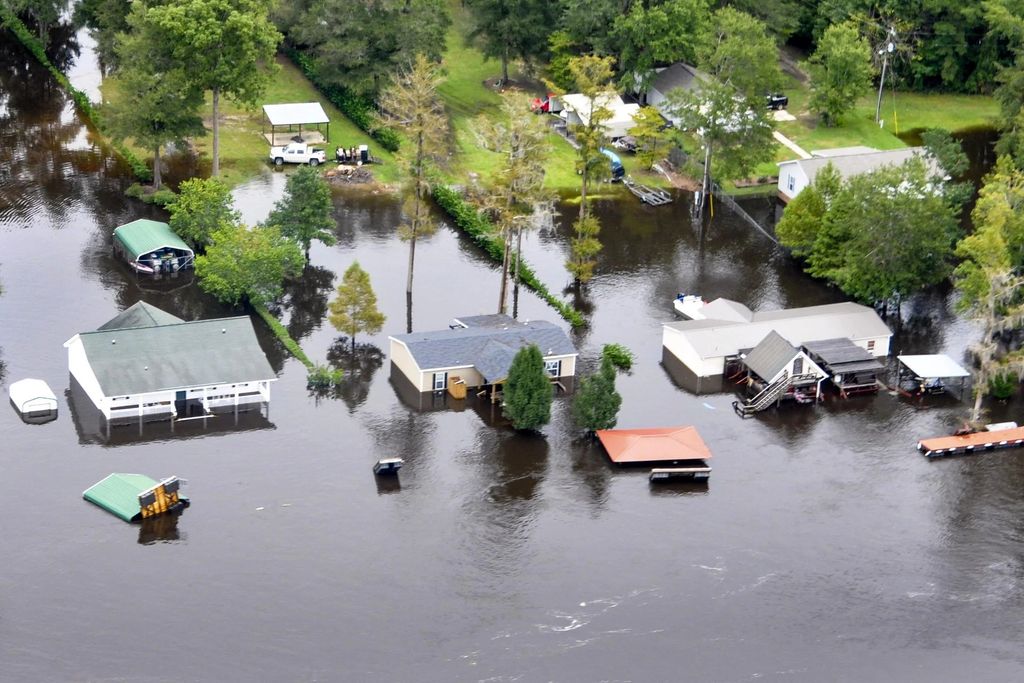Across the United States, communities are increasingly grappling with the complexities and consequences of extreme precipitation. This meteorological phenomenon involves a location receiving significantly more rain or snow in a short period than is typically experienced. Understanding these events is crucial as they represent a growing challenge for both urban and rural areas.
Such intense rainfall or snowfall can overwhelm natural and engineered systems, leading to a cascade of environmental and societal impacts. From disrupting daily life to posing severe threats to infrastructure and public health, the effects of extreme precipitation are far-reaching. As weather patterns continue to evolve, the frequency and intensity of these events warrant close examination.
This in-depth look explores the characteristics of extreme precipitation, tracing its historical trajectory and outlining the scientific mechanisms driving its increase. We will also examine the anticipated future trends and the profound implications these events have for human health and safety. The insights gathered from climate data and projections highlight the urgency of addressing this significant environmental concern.

1. **Defining Extreme Precipitation: More Than Just a Heavy Downpour**Extreme precipitation is characterized by a location receiving substantially more rain or snow within a brief timeframe than is considered normal for that area. What precisely qualifies as “extreme” is not a fixed measurement; rather, it varies considerably depending on the specific geographic location and the prevailing season. A rainfall amount deemed common in one region might be an extraordinary event in another.
For instance, an area might regularly experience two inches of rainfall from a single storm, where such an event would be considered routine. However, in a different locale, this same amount of rain could be exceptionally rare, thus classifying it as an extreme precipitation event. This regional and seasonal variability underscores the importance of local historical climate records in defining what constitutes an unusual weather occurrence.
In the context of scientific analysis and mapping, extreme precipitation is often precisely defined for consistency. When visualizing these events, for example, on climate assessment maps, it is typically categorized as the top 1% of the heaviest precipitation events recorded for a given area based on its historical data. This percentile-based definition allows for a standardized understanding and comparison of extreme events across diverse climates.

2. **Historical Trends: A Noteworthy Increase Since the 1950s**Since the mid-20th century, specifically the 1950s, the contiguous United States has observed a discernible upward trend in the occurrence of heavy precipitation events. This increase has been particularly pronounced in certain regions, with the Northeast and Midwest experiencing a notable rise in these intense rainfall and snowfall incidents. This historical pattern points to a significant shift in precipitation dynamics over several decades.
Scientific inquiry into these trends has yielded strong evidence linking this observed increase to human activities. The warming of the planet, largely attributed to anthropogenic influences, is understood to be a key contributing factor. This connection highlights how broader climate changes are manifesting in more localized and impactful weather phenomena, directly affecting communities.
The consistent rise in heavy precipitation events across a significant portion of the country suggests a systemic alteration in weather patterns rather than isolated occurrences. This long-term trend underscores the ongoing and evolving nature of climate change’s influence on the frequency and intensity of extreme weather. Understanding this historical context is vital for projecting future risks and developing effective mitigation strategies.
3. **Scientific Drivers: How Warming Fuels More Intense Events**The mechanism behind the observed increase in extreme precipitation events is directly tied to rising air temperatures. Warmer air possesses a greater capacity to hold moisture. As the planet’s average temperature climbs, the atmosphere becomes more efficient at intensifying the process of evaporation from bodies of water and land surfaces.
This intensified evaporation leads to a significant increase in the amount of moisture present in the atmosphere. Essentially, a warmer atmosphere acts like a larger sponge, capable of absorbing and retaining more water vapor. When conditions are right for precipitation, this additional moisture becomes readily available, altering the dynamics of cloud formation and rainfall.
Consequently, this heightened moisture content in the air provides the fuel for more intense precipitation events. When atmospheric systems release this accumulated moisture, the resulting rainfall or snowfall can be exceptionally heavy, occurring in shorter bursts. This direct link between warming temperatures, increased atmospheric moisture, and more severe precipitation is a fundamental aspect of how climate change influences extreme weather.

4. **Future Projections: A Looming Increase in Frequency and Intensity**Looking ahead, climate models and projections indicate that as global temperatures continue their upward trajectory, extreme precipitation events are expected to occur with greater frequency. This forecast applies broadly across the United States, signaling a future where intense rainfall and snowfall become more common occurrences. The trend observed since the 1950s is anticipated to continue and potentially accelerate.
Notably, this increase in heavy bursts of precipitation is projected even for regions that might, paradoxically, experience an overall decrease in total precipitation annually. In such areas, while the total volume of rain or snow over a year might diminish, the precipitation that does fall will concentrate into fewer, but much more intense, events. This means drier periods could be punctuated by severe deluges.
These heavier bursts of precipitation carry a significant consequence: an increased risk of runoff and flooding. When water falls too quickly for the ground to absorb it, or for drainage systems to manage, it flows over surfaces, gathering momentum and volume. This heightened runoff capacity directly contributes to elevated flood risks, posing substantial challenges for land management and urban planning.

5. **Seasonal Shifts: Winter and Spring Face Higher Risks**The anticipated changes in extreme precipitation are not uniform throughout the year; they exhibit distinct seasonal variations. Climate projections indicate that the contiguous United States and Alaska are expected to experience an increase in extreme precipitation during both the spring and winter months. These seasons may see more frequent and intense storms, impacting snowpack accumulation and spring melt dynamics.
Conversely, the outlook for summer precipitation is less certain across various regions of the country. While some areas are already experiencing, and are projected to continue experiencing, drier summer conditions, the precise changes in extreme precipitation during this season are still being studied. This variability introduces additional complexities for water resource management and agricultural planning.
This seasonal differentiation means that communities need to consider specific vulnerabilities at different times of the year. For instance, increased winter precipitation could mean heavier snow loads and subsequent melt-related flooding, while more intense spring rains could lead to rapid river swelling. These distinct seasonal patterns necessitate tailored preparedness and response strategies to mitigate potential impacts.

6. **Human Health Impacts: The Critical Link to Increased Flooding**One of the most immediate and critical consequences of more frequent and intense heavy storms is a corresponding increase in flooding events, which directly impacts human health. These floodwaters pose numerous dangers, especially in urban environments where natural absorption is minimal. Cities, with their expansive networks of buildings and paved surfaces, do not allow water to soak into the ground as effectively as natural landscapes do.
Agricultural areas also face heightened flood susceptibility due to specific land management practices. Intensive agriculture, by its nature, can diminish the soil’s capacity to absorb large volumes of water. This reduced absorption capability renders farmlands more prone to inundation during periods of heavy rainfall, impacting crop yields and potentially affecting local water tables.
The pervasive threat of flooding extends beyond immediate inundation. It creates conditions ripe for various health hazards, from physical injuries to long-term environmental concerns. The ability of floodwaters to spread contaminants and disrupt essential services directly links extreme precipitation to widespread public health challenges, demanding robust preparatory and responsive measures from communities.

7. **Human Health Impacts: Contaminants and Drinking Water Safety**Floodwaters, a direct outcome of extreme precipitation events, are notorious for their capacity to transport a dangerous array of substances. As these waters sweep across inundated areas, they pick up debris, various chemicals, bacteria, and other contaminants. Many of these substances are harmful to humans, posing immediate and long-term health risks to anyone coming into contact with them or consuming affected resources.
Furthermore, the contamination of drinking water resources represents a grave threat. Floodwaters can infiltrate and compromise public and private water supplies, introducing pathogens and pollutants. If this contamination is not effectively removed through treatment processes, the compromised drinking water can lead to widespread illnesses, affecting large populations.
Ensuring the safety and potability of drinking water becomes a paramount concern following flood events. The presence of harmful agents in water supplies necessitates rigorous testing and, often, extensive purification efforts before water can be deemed safe for consumption. Protecting these vital resources from the impacts of flood-borne contaminants is a critical public health challenge associated with extreme precipitation.
Diving deeper into the cascading effects of extreme precipitation, we now turn our attention to the more intricate health implications, the severe strain on vital infrastructure, and the far-reaching consequences for agriculture and public services.

8. **Human Health Impacts: Disrupted Healthcare Access**One significant and immediate health impact of increased extreme precipitation events is the disruption of access to essential healthcare services. As heavy storms lead to more frequent and intense flooding, roads, which are critical arteries for emergency services and patient travel, can become impassable. This physical obstruction can delay or prevent individuals from reaching hospitals, clinics, or pharmacies in times of urgent need.
Furthermore, healthcare facilities themselves are not immune to the destructive power of floodwaters. Hospitals, emergency rooms, and local health centers can sustain direct damage from inundation, rendering them inoperable or severely limiting their capacity to provide care. Such damage can compound the crisis, leaving communities without critical medical infrastructure precisely when demand for health services is at its peak.
9. **Human Health Impacts: Mold and Respiratory Illnesses**Beyond the immediate dangers of floodwaters, the aftermath of extreme precipitation events introduces insidious long-term health risks, particularly from the proliferation of mold. When homes and other buildings become inundated, residual moisture and dampness create ideal conditions for mold to grow rapidly within walls, floors, and personal belongings. This hidden threat can persist long after the water recedes.
Exposure to mold, especially in significant quantities, is directly linked to the exacerbation of various respiratory illnesses. Individuals with pre-existing conditions such as asthma may experience worsened symptoms, including increased frequency and severity of attacks. Even those without prior respiratory issues can develop new sensitivities or conditions, underscoring the necessity of thorough remediation following any flood event.

10. **Human Health Impacts: Injuries, Deaths, and Mental Health**Extreme precipitation, through its direct consequence of flooding, carries the severe potential for physical harm, including injuries and, in tragic instances, fatalities. Rapidly moving floodwaters can sweep away individuals, vehicles, and structures, posing immediate life-threatening dangers. The collapse of infrastructure, electrical hazards, and exposure to contaminated water also contribute to a high risk of injury during and immediately after such events.
Beyond physical casualties, the psychological toll of extreme precipitation and flooding is profound and far-reaching. Experiencing the loss of homes, possessions, and community stability due to inundation can lead to significant mental health impacts, including trauma, anxiety, and depression. The displacement from familiar surroundings and the prolonged recovery process can create chronic stress, affecting individuals and entire communities for extended periods.

11. **Agricultural Impacts: Runoff, Contamination, and Water Quality Degradation**Agricultural areas, often characterized by intensive farming practices, are particularly vulnerable to the impacts of extreme precipitation, primarily through increased runoff. When heavy rainfall occurs, the soil’s capacity to absorb large volumes of water can be overwhelmed, leading to significant surface runoff across farmlands. This runoff carries with it vital agricultural inputs, including fertilizers and pesticides, away from crops and into surrounding ecosystems.
As water flows over these surfaces, it picks up and transports contaminants, including excessive nutrients from fertilizers, into streams and lakes. Once these nutrients enter a body of water, they act as fuel for harmful algal blooms. These blooms rapidly deplete oxygen levels in the water, creating dead zones that are detrimental to aquatic life and severely degrade the overall quality of water bodies.
The degradation of water quality poses significant challenges for both human and ecological health. Water bodies affected by algal blooms and agricultural runoff may become unsafe for recreational activities like swimming and fishing. Furthermore, if these contaminated water sources are part of a community’s drinking water supply, extensive and costly treatment processes are required to render the water safe for consumption, or alternative sources may need to be found, impacting local water security.

12. **Stormwater Infrastructure: Overwhelmed Systems and Water Quality Strain**The infrastructure designed to manage urban runoff, specifically stormwater systems, faces immense pressure from increasingly frequent and intense precipitation events. These systems, critical for directing rainwater away from populated areas, can quickly become overwhelmed when a location receives an exceptional volume of rain within a short period. This overload diminishes their effectiveness in preventing localized flooding.
When stormwater systems are pushed beyond their capacity, the excessive water flow directly impacts water quality. The systems are designed to manage a certain volume, and when that volume is exceeded, water can back up, mix with pollutants, and inundate areas not typically subjected to such flows. This can introduce contaminants into areas where they normally would not be found, posing risks to public health and the environment.

13. **Stormwater Infrastructure: Combined Sewer Overflows and Raw Sewage**A particular challenge for many older cities in the United States lies with their combined sewer systems. These systems are designed to carry both municipal wastewater (from homes and businesses) and stormwater runoff in the same set of pipes. During periods of heavy precipitation, these combined systems can reach their maximum capacity much faster than separated systems, leading to a critical failure point.
When overwhelmed by the sheer volume of stormwater, these combined sewer systems are often forced to release untreated wastewater directly into local water bodies, such as rivers, lakes, and coastal areas. These combined sewer overflows (CSOs) contain raw sewage, along with a dangerous cocktail of debris, bacteria, viruses, and other hazardous substances. The release of such untreated waste poses severe risks to both human populations and wildlife, contaminating ecosystems and threatening public health.
14. **Infrastructure Vulnerability: Disproportionate Impacts on Underserved Communities**The impacts of flooding and overwhelmed infrastructure are not distributed evenly across all communities; rather, they disproportionately affect underserved populations. These communities often reside in areas more prone to flooding due to historical planning decisions, geographical vulnerability, or inadequate investment in protective infrastructure. Their existing infrastructure may also be older and less resilient.
Consequently, the burden of recovering from infrastructure damage, including compromised water systems, impassable roads, and damaged public utilities, falls more heavily on these communities. The financial and social costs associated with repair and recovery can further exacerbate existing inequalities, making it more challenging for these populations to rebuild and thrive after a major extreme precipitation event.

15. **Infrastructure Vulnerability: Unprepared Community Water Systems**Alarmingly, the preparedness of public water systems for the increased frequency of extreme precipitation events is a significant concern across the nation. More than 1,000 community water systems in the United States already face ongoing water quality problems, indicating a pre-existing vulnerability to environmental stressors and operational challenges.
These systems are often not well-prepared to cope with the sudden surges in water volume or the heightened risk of contamination that accompany severe flooding. Their existing infrastructure may lack the resilience or capacity to manage the influx of floodwaters, leading to service disruptions, reduced water quality, or even complete system failures. The communities served by these vulnerable systems, which are frequently composed of populations with limited resources, bear the brunt of these deficiencies, highlighting a critical area for resilience building.
As extreme precipitation events become an increasingly common feature of our changing climate, the need for proactive measures becomes paramount. Addressing these multifaceted impacts—from protecting human health to bolstering critical infrastructure and safeguarding agricultural productivity—will require comprehensive strategies rooted in scientific understanding, community engagement, and sustained investment. The future resilience of communities across the United States depends on our collective ability to adapt and innovate in the face of these intensifying weather challenges.







